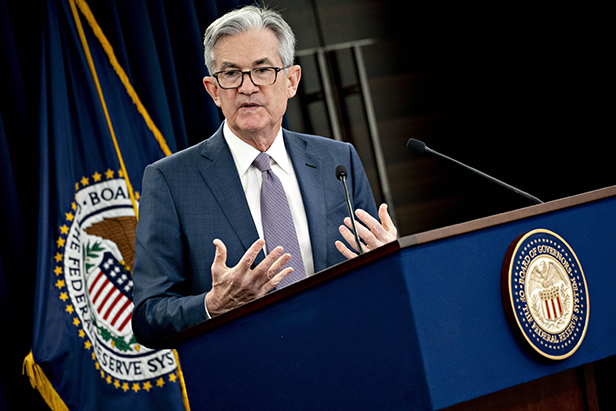
Federal Reserve officials continue to project near-zero interest rates at least through 2023, while upgrading their economic outlook to reflect greater optimism about the U.S. recovery from Covid-19.
"Following a moderation in the pace of the recovery, indicators of economic activity and employment have turned up recently, although the sectors most adversely affected by the pandemic remain weak," the Federal Open Market Committee (FOMC) said in its policy statement Wednesday. "Inflation continues to run below 2 percent."
Recommended For You
Seven of 18 officials predicted higher interest rates by the end of 2023, compared with five of 17 at the December meeting, so a slightly larger group now see an earlier start to the withdrawal of ultra-easy monetary policy, according to the FOMC's quarterly economic projections, which were also issued Wednesday.
Fed officials expect inflation in the personal consumption expenditures (PCE) price index to bump up this year to 2.4 percent, but then drop back to 2 percent next year, according to the projections. Core PCE inflation, which excludes food and energy, is forecast to hit 2.2 percent this year and fall to 2 percent in 2022.
U.S. central bankers also left asset purchases unchanged, at $120 billion a month, and repeated that this pace will be maintained until "substantial further progress" is made on their employment and inflation goals. The target range of the benchmark federal funds rate was also kept at 0 to 0.25 percent, where it's been since last March.
Powell and his colleagues met as the economy continues to improve. They upgraded forecasts for economic growth and the labor market. Job gains picked up last month, with the median estimate for unemployment falling to 4.5 percent at the end of 2021 and 3.5 percent in 2023. Moreover, President Joe Biden signed an additional $1.9 trillion of pandemic aid into law last weekend. Vaccinations continue apace, allowing states to start easing lockdown restrictions, which could release a torrent of consumer spending. Gross domestic product is expected to expand 6.5 percent this year, up from a prior projection of 4.2 percent.
These prospects for stronger growth have ignited some concern about higher inflation, contributing to a rise in 10-year Treasury yields in recent weeks. Powell told lawmakers in testimony last month that the economy still has a long way to go before there's any risk of overheating. Even with 379,000 jobs added to payrolls in February, 9.5 million fewer Americans have jobs today than did a year ago.
Christopher Waller, who joined the Board of Governors in late December, contributed projections for the first time this month.
—With assistance from Ana Monteiro.
© Touchpoint Markets, All Rights Reserved. Request academic re-use from www.copyright.com. All other uses, submit a request to [email protected]. For more inforrmation visit Asset & Logo Licensing.



